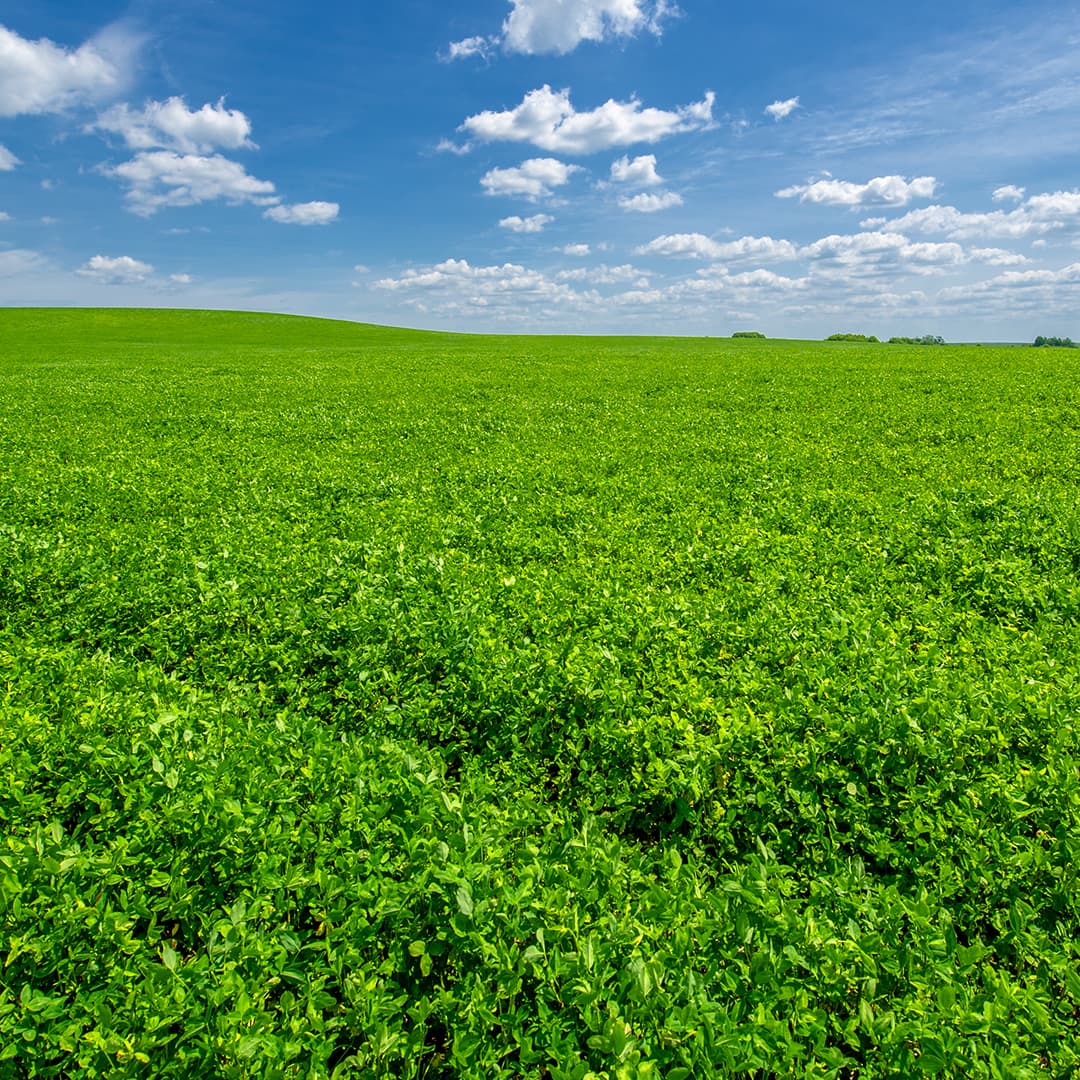Shorter Alfalfa Rotations Increase Profitability
Most alfalfa growers know that yield per acre declines as stands age. The accumulated impact of harvest stress, pest (disease, insect, nematode) damage, wheel traffic, winter injury, etc. thins stands and weakens existing plants. The net impact is lower yields and often lower forage quality (due to weed encroachment in thin stands) as alfalfa stands get older.
Dr. Dan Undersander at the University of Wisconsin has studied the economic impact of stand age on yield and quality in alfalfa. On average, researchers found an average yield decline of 10% in the third production year (including the establishment year) and 24% in the fourth production year. Yield declines were generally greater east of the Mississippi and slightly less to the west of the Mississippi (unless under irrigation). This strong relationship between advancing stand age and lower yields indicates that growers should consider turning-over (rotating) alfalfa stands faster to ensure that more of their alfalfa acres are in the high yield phase of their stand life at any given time.
An analysis of the economic value of short-term alfalfa rotations (3 years including establishment) vs. more typical alfalfa rotations (5 years including establishment) found that base income for the short (3-year) rotation was slightly less than the 5-year rotation due to higher production costs (more frequent reseeding) and slightly lower yield (because more land was in new seedings at any given time with the shorter rotation). However, increased legume nitrogen credits and higher corn yields (corn following alfalfa yields 10% more than corn following corn) more than offset this difference. In addition, many areas do not require root worm control on first year corn when compared to corn on corn (a savings of $15-$18/acre under the shorter rotation). Finally, the higher quality (weed-free) alfalfa harvested from denser stands under shorter rotations generated significantly greater income ($17/acre) when compared to lower quality alfalfa harvested from thinner, weedier stands under the long rotation.
In summary, this research clearly demonstrated that turning over (rotating) alfalfa stands more quickly (3 years including establishment) provides: higher yields, greater forage quality, reduced pesticide use, higher legume nitrogen credits, increased corn yields, and greater overall per acre profitability.
To obtain a copy of the complete study (“Value of Short Rotations for Alfalfa Profitability”; UW Extension Publication X1092) contact W-L Research at 608-295-3566.
Most alfalfa growers know that yield per acre declines as stands age. The accumulated impact of harvest stress, pest (disease, insect, nematode) damage, wheel traffic, winter injury, etc. thins stands and weakens existing plants. The net impact is lower yields and often lower forage quality (due to weed encroachment in thin stands) as alfalfa stands get older.
Dr. Dan Undersander at the University of Wisconsin has studied the economic impact of stand age on yield and quality in alfalfa. On average, researchers found an average yield decline of 10% in the third production year (including the establishment year) and 24% in the fourth production year. Yield declines were generally greater east of the Mississippi and slightly less to the west of the Mississippi (unless under irrigation). This strong relationship between advancing stand age and lower yields indicates that growers should consider turning-over (rotating) alfalfa stands faster to ensure that more of their alfalfa acres are in the high yield phase of their stand life at any given time.
An analysis of the economic value of short-term alfalfa rotations (3 years including establishment) vs. more typical alfalfa rotations (5 years including establishment) found that base income for the short (3-year) rotation was slightly less than the 5-year rotation due to higher production costs (more frequent reseeding) and slightly lower yield (because more land was in new seedings at any given time with the shorter rotation). However, increased legume nitrogen credits and higher corn yields (corn following alfalfa yields 10% more than corn following corn) more than offset this difference. In addition, many areas do not require root worm control on first year corn when compared to corn on corn (a savings of $15-$18/acre under the shorter rotation). Finally, the higher quality (weed-free) alfalfa harvested from denser stands under shorter rotations generated significantly greater income ($17/acre) when compared to lower quality alfalfa harvested from thinner, weedier stands under the long rotation.
In summary, this research clearly demonstrated that turning over (rotating) alfalfa stands more quickly (3 years including establishment) provides: higher yields, greater forage quality, reduced pesticide use, higher legume nitrogen credits, increased corn yields, and greater overall per acre profitability.
To obtain a copy of the complete study (“Value of Short Rotations for Alfalfa Profitability”; UW Extension Publication X1092) contact W-L Research at 608-295-3566.



